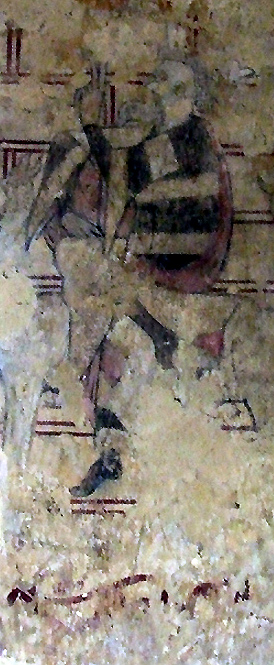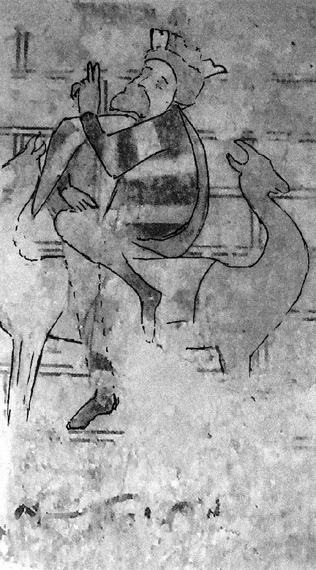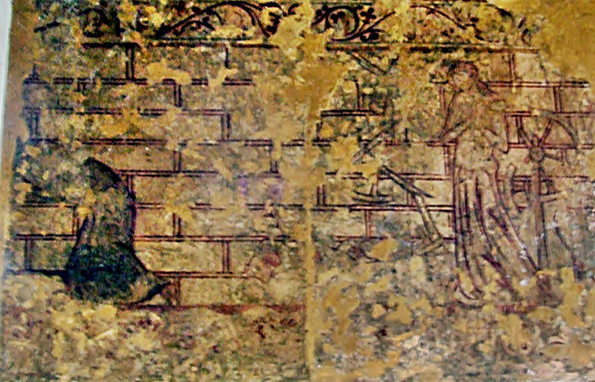Burton Latimer, Northamptonshire (†Peterborough) Early C.14
The Martyrdom of St Catherine


These are the remaining reasonably clear scenes from a painted series of the Martyrdom of St Catherine on the north wall at Burton Latimer. At the left is the Emperor Maxentius in judgement, looking the very picture of a tyrant with his crown, crossed legs, dramatic hand gesture giving the order to strike, and above all, his elaborate throne with its curving twin arms terminating in animal heads. I think these, clearer in the black and white sketch at the right than in the colour photograph, are possibly intended for camel heads, and they certainly reinforce the general idea of oriental magnificence.
The paintings, which according to Tristram¹ employed a technique as near as anything English wallpainting has to true fresco, being set out on a thin and still damp layer of lime putty on top of the plaster, do not show to best advantage against their insistent and intrusive background of fake painted brickwork. This is evident enough in the Maxentius scene, but it is even more marked (and even more irritating) in the scene of the torture and death of St Catherine shown below at the right

Here the heavily painted illusionistic brick wall makes it hard to see Catherine and the wheels – one at the extreme right almost intact, another further left on the other side of Catherine broken into several pieces. Catherine stands, stripped to the waist and hands joined in prayer. An angel with a sword once swooped over her head to break the wheels, but only a few incoherent traces of the sword are now detectable, and I can make out nothing of the group of the group of philosophers who tried and failed to argue Catherine from her Christian faith and were thrown into the fire by Maxentius for their trouble. Tristram’s drawing² shows this group, fallen at Catherine’s feet, but if the details were clear then, they are completely invisible now.
At the left of the photograph Catherine kneels to await the executioner’s axe, but only part of her figure is here now, and there is no sign of the executioner.
This must have been a remarkably impressive series once. The figure drawing is excellent, especially in Maxentius’s ambitious pose. And his throne is a quite wondrous object, the like of which I have certainly never seen elsewhere.
¹ Tristram III, p.146, and his drawings as plates 47, 48. Plate 47 shows the intervening angel and the fallen philosophers, but in Plate 48 Maxentius’s crown is missing.